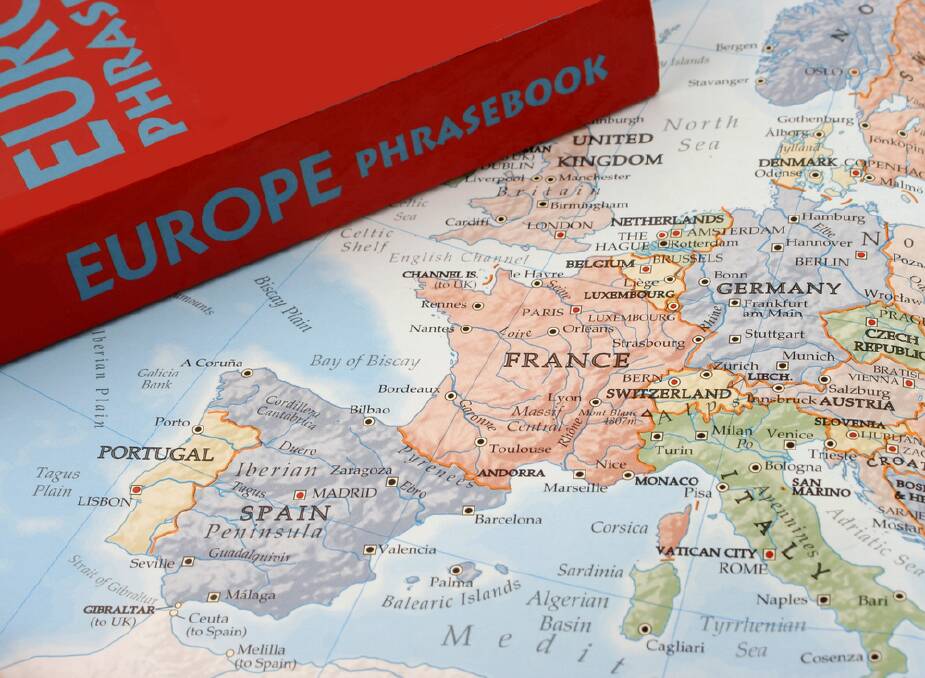Communicating in a digital world: How technology has broken barriers

This is branded content.
Are you considering a Graduate Diploma in Business or other tertiary study? It's an exciting time, full of possibility and learning.
Further study can genuinely equip you well for the workforce and help you lock in better remuneration, senior roles and career progression.
Most people with postgraduate qualifications are better off in their jobs and reap more rewards than people without. Once you've paid off the student debt, you're in the clear and can set yourself up well.
And part of the business landscape is technology - no business can function without it. Whether it's the internet, financial technology or inventory management, current tech is essential to running a business. And so is communication and communication technology.
But how exactly has technology broken communication barriers in the recent past and the current day?
This helpful article will explain how, so read on to learn more about this fascinating and valuable topic. By the end, you'll be an expert.
Mobile phone technology
For those old enough, do you remember a world where you only had a landline phone? People would call and leave a voice message on a tape answering machine, and you'd have to wait until you got home from school or a day out to listen and get back to them.
They'd have to wait literally hours for a return call. If you went away for a road trip or a holiday, they'd have to wait weeks to hear from you.
The mobile phone, and especially the smartphone, has completely broken this barrier of communication.
There are an estimated 6.84 billion smartphones in the world at the moment. That's the majority of the world's population who own a smartphone device.
These nifty devices have broken down communication barriers, allowing people to call each other and connect instantly, no matter where they are.
People take calls while driving, working, and going about their day.
Text and instant messaging technology also means that you can reach people with a quick text message, and they can message you back either on the spot or at their earliest convenience.
The fact that this technology is instant has forever altered the way humans communicate with each other; some will say it for better, and some will say it for worse.
Email
Prior to the advent of the internet and the invention of email, if you wanted to communicate in writing, you had to send a letter.
You'd either type or hand write your message on a piece of paper, fold it up, put it in an envelope, purchase a stamp and put it in the mailbox.
Then, depending on the destination, the receiver would have to wait days, weeks, or even months to receive it. You'd have to wait an equal amount of time, or longer, for a reply. People even had pen pals or friends they only knew through written correspondence.
With the advent of email, it became possible to correspond via writing to anyone in the world instantly, provided you have their email address.
This is a massive broken barrier for communication and revolutionised both the business and personal communication worlds. It's gotten to the point that Australia Post is reducing their letter delivery days as more companies opt for digital, paper-free communication with customers.
Consumers can also contact companies' customer service or their friends and family via email. Email is free as well, with several significant providers offering free email services for you to use.
Video conferencing
Although video conferencing has been around for years, there was one major global event that genuinely cemented its use for organisations, individuals and other entities.
That event was the COVID-19 global pandemic, as billions of workers around the world and students found themselves having to work and learn remotely via video calls. Platforms like Zoom, WebEx, Teams and more exploded into the public consciousness.
Now, you can have a video call with anyone, anywhere in the world, provided both your internet connections are stable enough to support a live video call.
This has broken barriers, particularly for companies, as teams from different offices and locations can collaborate in real-time.
Hybrid working
Another broken barrier that technology has smashed is how people work. Again, the pandemic was primarily responsible for this, as many workers across Australia now work hybrid jobs.
They split their time between the office and home, with digital technology enabling collaboration and communication. Email, video calls, chat apps and cloud-based storage enable people to work together from any location, use digital tools to brainstorm and solve problems and enjoy less time commuting from home to work.
However, there has been a recent shift with many large corporations calling their workforce back to the office, and some even offering financial incentives, such as tying bonuses to time spent on site, in an attempt to entice their staff back on site.

AI meeting transcription
Most video call platforms now offer artificial intelligence tools to live transcribe what is said in meetings. This is a valuable tool for a few reasons.
For one, hard of hearing or deaf people can now participate in meetings, being able to read what is being said in real-time. This has benefits for these workers as it increases their participation in the workforce and results in fewer people receiving government benefits.
However, even for those who can hear, it means taking minutes and records of meetings is easier and more efficient. However, it is worth noting that the accuracy of these tools is not 100 per cent complete, and the technology will get a certain percentage of words wrong.
However, it does eliminate the need for third-party transcription and reduces the time spent on manual transcription, which is a significant saving.
Translation tools
Prior to technological advances, if you wanted to communicate with someone in their native language, you'd need to rely on either a translator or have to learn the language. Or, you could use a book or dictionary to translate, which was slow going.
Now, with tools such as Google Translate and DeepL, you can gain accurate translations in real-time, which is excellent for communicating with businesses, clients, customers, friends and other people even if you don't share a common language.
A communication conclusion
This informative article has shared all about communicating in a digital world, and how technology has broken down long-standing barriers.
We've shared about phones, email, video calling, hybrid working tools and translation tools, and how all of these have smashed barriers such as language, time zones, location and more.


